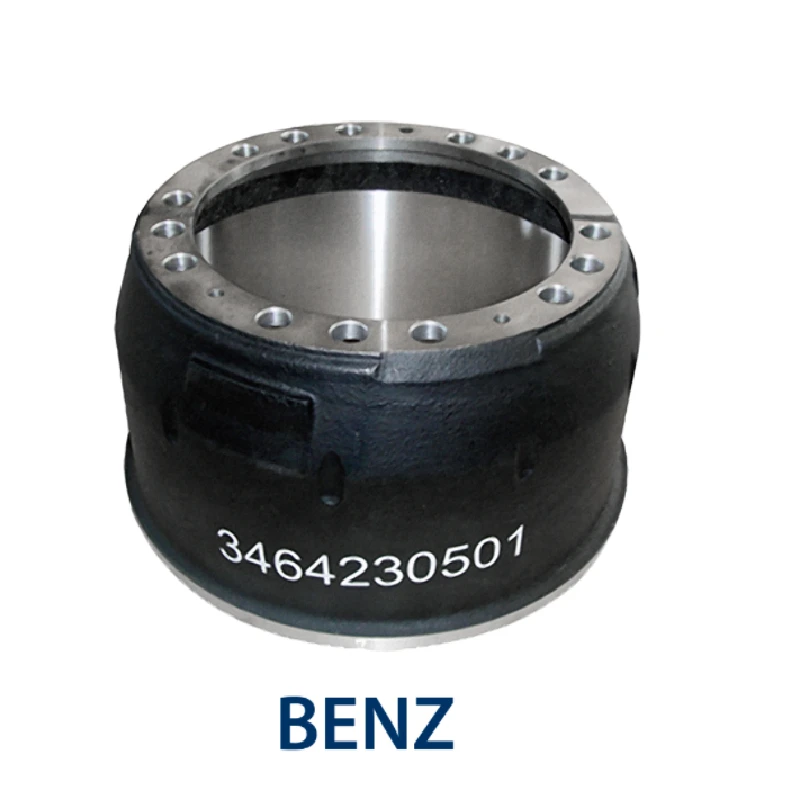Dec . 04, 2024 17:01 Back to list
how to check brake drums
How to Check Brake Drums A Comprehensive Guide
Brake drums are an essential component of a vehicle's braking system, especially in older cars and trucks that utilize drum brakes. These heavy-duty metal drums encase the brake shoes and are responsible for generating friction to slow down or stop the vehicle. Over time, brake drums can wear down, become warped, or suffer from other issues that can compromise their effectiveness. Knowing how to check brake drums is crucial for maintaining your vehicle's safety and performance. This article will guide you through the steps to inspect brake drums and identify any potential problems.
Understanding Brake Drums
Brake drums are typically found on the rear wheels of many vehicles, although some older models may still have drum brakes on the front wheels as well. They operate using a system of brake shoes that expand and contract against the inner surface of the drum. When you press the brake pedal, hydraulic pressure forces the shoes outward, creating friction against the drum's inner surface, which slows down the vehicle.
Why Regular Inspection is Important
Regular inspection of your brake drums is vital for ensuring safe driving conditions. Worn-out or damaged brake drums can lead to reduced braking efficiency, longer stopping distances, and, ultimately, a higher risk of accidents. Additionally, if left unchecked, problems with brake drums can lead to more extensive and costly repairs.
Steps to Check Brake Drums
1. Gather Necessary Tools Before you begin, ensure you have the right tools on hand. You will need a jack, jack stands, a lug wrench, a basic set of hand tools (such as wrenches and screwdrivers), and a brake drum gauge or caliper for accurate measurements.
2. Prepare the Vehicle Park the vehicle on a level surface and engage the parking brake. Loosen the lug nuts on the wheel you will be inspecting but do not remove them completely yet. Use a jack to raise the vehicle and securely place it on jack stands.
how to check brake drums

3. Remove the Wheel Once the vehicle is securely lifted, remove the lug nuts and take off the wheel to access the brake drum.
4. Inspect the Brake Drum Visually inspect the brake drum for any signs of damage, such as cracks, grooves, or scoring on the surface. Use a flashlight to get a good look inside the drum. Uneven wear patterns can indicate issues with the brake shoes or the drum itself.
5. Measure the Drum Using a brake drum gauge or caliper, measure the diameter of the drum. Make sure the measurement is within the manufacturer's specifications. If the drum has worn beyond the recommended limits, it will need to be replaced.
6. Check for Warping To check if the drum is warped, you can spin the drum while it's on the vehicle. Listen for any unusual noises or observe any abnormal movement. If you notice any bouncing or vibrations, the drum may be warped and could require resurfacing or replacement.
7. Inspect Brake Shoes While you have the drum removed, inspect the brake shoes for wear. Look for thinning material or cracks. If the brake shoes appear worn, replace them along with the drum.
8. Reassemble the Components Once you have completed your inspection, reassemble the components in the reverse order of disassembly. Make sure to torque the lug nuts to the manufacturer’s specifications when replacing the wheel.
9. Test Drive After everything is back together, take your vehicle for a test drive. Pay attention to how the brakes feel. If you notice any unusual sounds, vibrations, or decreased braking performance, it may be necessary to revisit your inspection or consult a professional mechanic.
Conclusion
Checking brake drums is an important aspect of vehicle maintenance that should not be overlooked. By following these steps and performing regular inspections, you can help ensure that your vehicle’s braking system functions effectively, contributing to overall road safety. If you're unsure about any of the steps, or if you encounter significant wear or damage, don’t hesitate to seek the help of a professional mechanic to ensure your vehicle remains safe and reliable on the road.
-
ROR Web Development: Build Fast, Scalable, Secure Apps
NewsAug.17,2025
-
Scania Brake Drums: OEM Quality for Optimal Safety & Durability
NewsAug.16,2025
-
R.V.I: Advanced Remote Visual Inspection for Precision
NewsAug.15,2025
-
Discover HYUNDA: Innovative Vehicles, Equipment & Solutions
NewsAug.14,2025
-
R.V.I: Unlock Advanced Insights & Real-time Performance
NewsAug.13,2025
-
Kamaz Brake Drum: Durable & Reliable for Heavy Duty Trucks
NewsAug.12,2025
